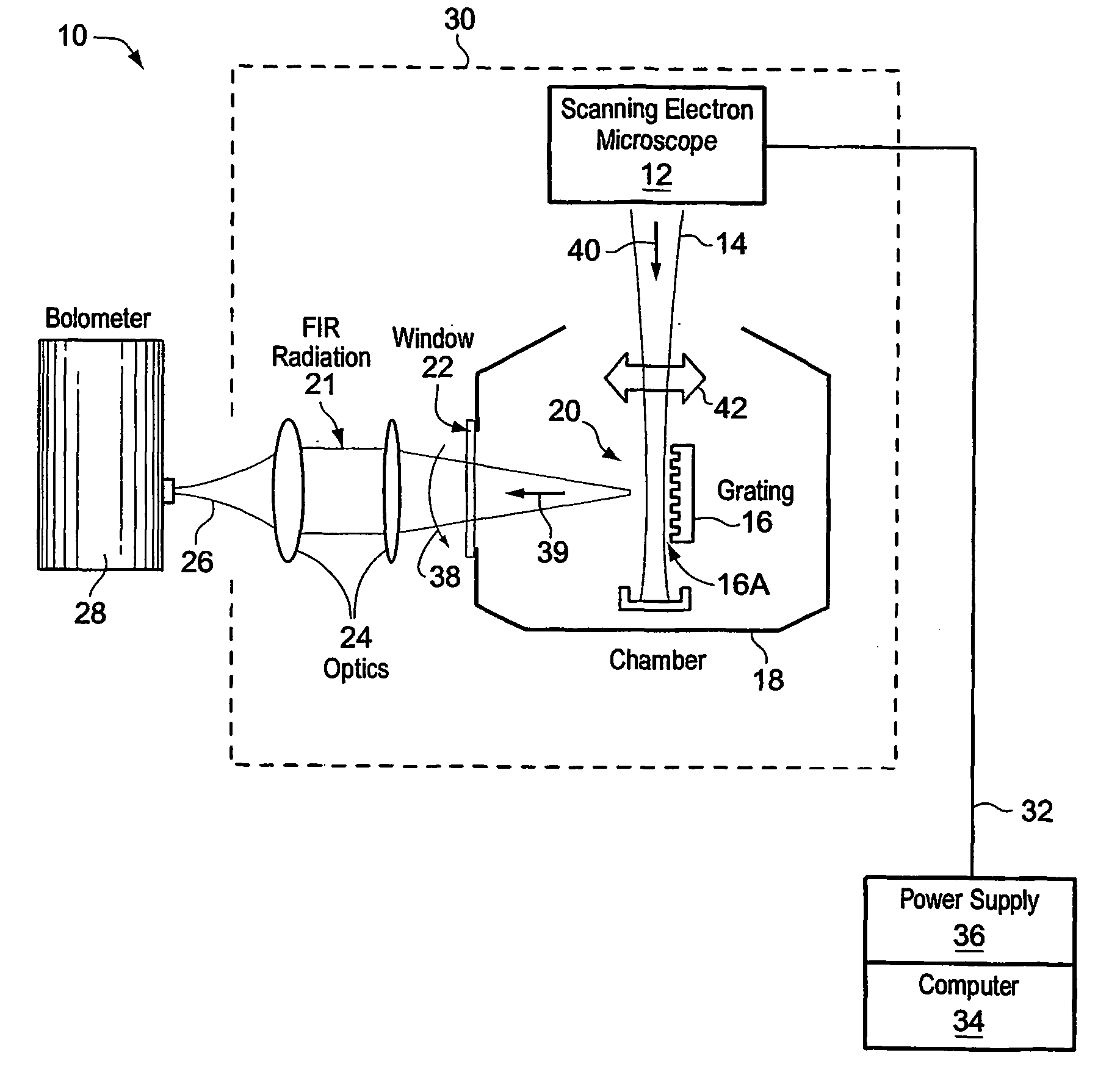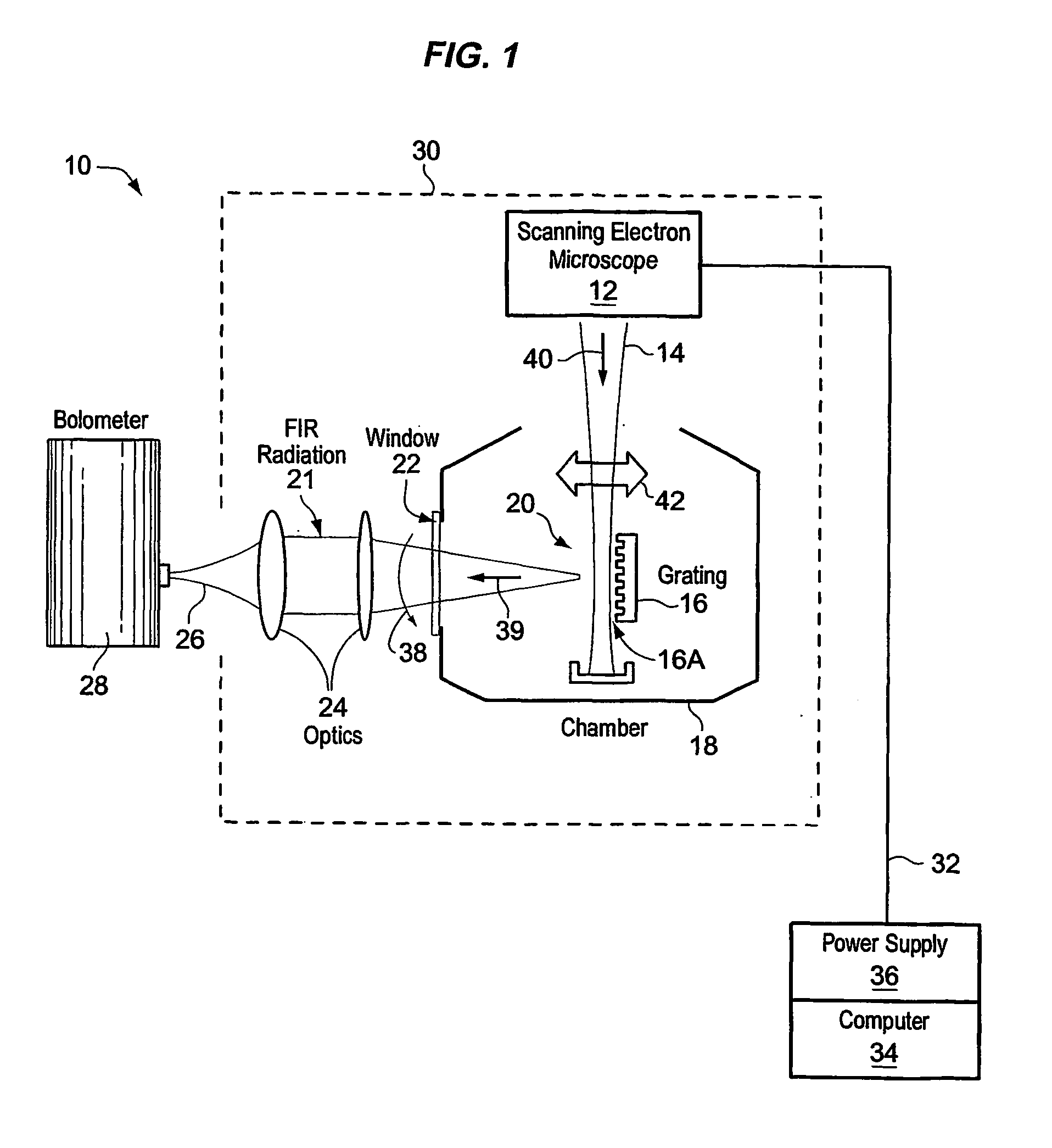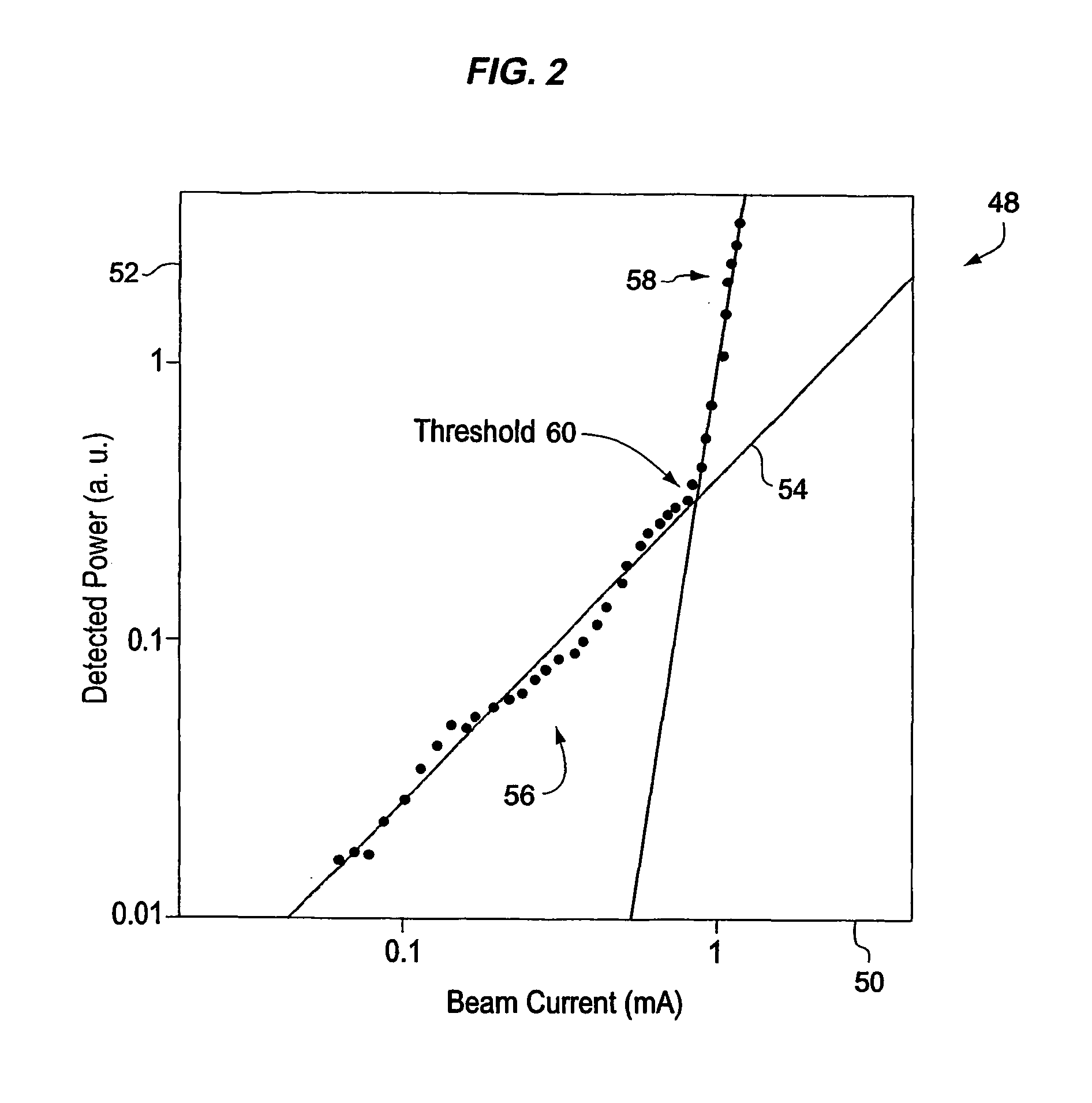Free electron laser, and associated components and methods
a free electron laser and laser technology, applied in the field of free electron lasers, can solve the problems of source and detector, lack of intensity, frequency-tuning ability and/or stability, and inapplicability,
- Summary
- Abstract
- Description
- Claims
- Application Information
AI Technical Summary
Benefits of technology
Problems solved by technology
Method used
Image
Examples
Embodiment Construction
[0021]FIG. 1 depicts one embodiment of a free electron laser 10. A scanning electron microscope (SEM) 12 generates an electron beam 14, as shown. A grating 16 (illustratively mounted on a specimen stage within a specimen chamber 18) is positioned at the beam focus 20 of electron beam 14. FIR energy 21 scatters from grating 16 and exits chamber 18 through a window 22, for example made from polyethylene. Optics 24 (e.g., a pair of TPX (tetramethyl-1-pentene) lenses that exhibit optical refraction characteristics to FIR radiation 21) may be used to focus energy 21 into a laser beam 26. FIG. 1 also illustratively shows a detector 28 (e.g., a bolometer) that may be used to detect radiation of laser beam 26.
[0022] The size of grating 16 may affect the overall size of laser 10, which may for example be formed into a hand-held unit 30 attached by an umbilical 32 (e.g., containing electrical wiring and data busses) to a computer 34 and power source 36. For example, power supply 30 operating ...
PUM
 Login to View More
Login to View More Abstract
Description
Claims
Application Information
 Login to View More
Login to View More - R&D
- Intellectual Property
- Life Sciences
- Materials
- Tech Scout
- Unparalleled Data Quality
- Higher Quality Content
- 60% Fewer Hallucinations
Browse by: Latest US Patents, China's latest patents, Technical Efficacy Thesaurus, Application Domain, Technology Topic, Popular Technical Reports.
© 2025 PatSnap. All rights reserved.Legal|Privacy policy|Modern Slavery Act Transparency Statement|Sitemap|About US| Contact US: help@patsnap.com



